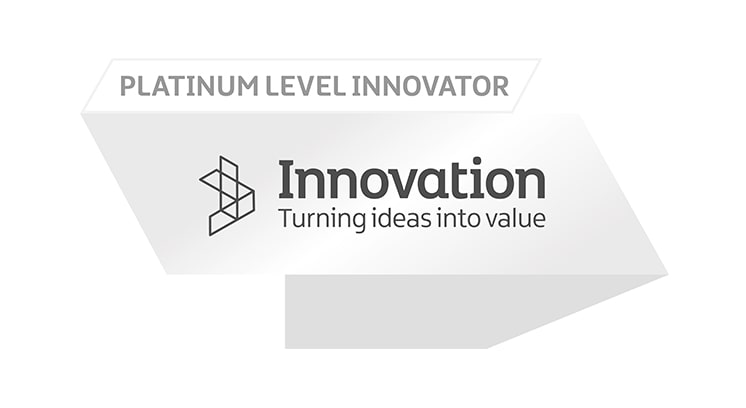Introduction to Workforce Scheduling
Workforce scheduling is the process of developing effective and efficient schedules that align team members and staff with operational needs. Employee availability, work volume changes, seasonal demand, and coordinating schedules across time zones are all considered when scheduling the workforce.
While manual adjustments can address individual nuances, modern workforce scheduling software enriches this process. These digital tools offer in-depth insights by analysing historical scheduling data. This blog will provide a complete overview of workforce scheduling and the software transforming this process.
What is Workforce Scheduling?
Workforce scheduling establishes when, where and for how long your employees will work over the coming days, weeks, and months. Workforce scheduling is about creating operational models for your entire staff that cover your operation’s resource needs and ensure business continuity from one shift to the next. A vital role in making this happen is that of the scheduler.
The Role of a Scheduler
Schedulers carefully develop daily schedules, matching job requirements with the right skills and ensuring efficient and effective service delivery. Their role is multifaceted and critical in meeting organisational goals and aligning all service stakeholders to the demand for service.
During a typical day, schedulers must maintain an efficient and targeted schedule. This task could be more straightforward as it has to account for myriad real-time events that can disrupt the carefully planned schedule.
Key activities carried out by the scheduling team often include:
Unplanned events like sudden unavailability of staff, delays due to traffic, or equipment malfunctions can throw a wrench in the most well-planned schedules. In the face of such disruptions, schedulers must continually monitor, adjust, and communicate with mobile workers out in the field to mitigate the effects of these disruptions. This process, while essential, can be incredibly time-consuming and often stressful.
Workforce schedulers…
Schedulers juggle a myriad of responsibilities that go beyond business requirements. They have to manage real-life situations that affect their mobile workforce – holidays, absences, and unexpected issues in the field, ensuring continuity of service despite these challenges.
Understanding Workforce Scheduling
Workforce scheduling is about more than just predicting regular shifts. It is about adeptly handling unexpected changes—like last-minute absences or delays. In the wake of COVID-19, the vulnerabilities of ‘just-in-time’ supply chains became evident, highlighting the need for business continuity above cost-saving.
The pandemic underscored the value of supply chain resilience and dynamic workforce scheduling as organisations faced disruptions and navigated through both COVID-related and other geopolitical challenges.
Creating Balance
Factor in individual attributes such as an employee’s availability, skills, and productivity, combined with evolving remote work practices, and it becomes evident that workforce scheduling has grown in complexity as you balance:
- Employee availability
- The size of your workforce
- Business and operational requirements
- Anticipated workload fluctuations
- Seasonal demand variations
- Labour budget constraints
- Balancing full-time and part-time staff and hybrid workforces
- Adhering to working time regulations
- Understanding predictive scheduling laws
- Accommodating for absenteeism
Enjoying this blog so far? Download our eBook for a complete and detailed view of dynamic workforce scheduling today.
Industries That Rely on Workforce Scheduling
According to Indeed, over four million people in the UK are shift workers, making up around 14% of the workforce. This reveals a significant portion of the workforce that businesses must strategically manage, optimise for productivity, and, importantly, retain.
Since 2021, unemployment numbers have been notably low. This signifies a market where jobs outnumber the available talent. Consequently, the turnover rate in sectors that predominantly hire hourly workers is relatively high.
Let’s look a little closer at the industries that hinge critically on hourly workers and the nuances of workforce scheduling:
As industries grapple with the unique challenges of managing an hourly workforce, understanding the nuances of financial stability becomes paramount.
Dive deeper with our feature blog: Surviving Economic Uncertainty in Field Service
Workforce Scheduling Challenges
Even the most experienced planners face the challenge of unpredictable changes that can disrupt initial schedules, such as staff shortages or traffic congestion. Poor scheduling can lead to significant issues in service delivery:
- Delayed or missed appointments can cause low customer satisfaction levels and have knock-on effects on future schedules and service quality.
- Time spent travelling between jobs reduces productivity and leaves fewer customer satisfaction opportunities.
- Inappropriate skill matching can result in the wrong personnel being assigned to a job, underutilising workforce skills and repeat visits.
- High employee turnover can occur due to burnout or overwhelming workloads, impacting a business’s performance.
Workforce scheduling has evolved significantly from the days of basic spreadsheet management. Modern workforce scheduling software offers smart scheduling tools and functionalities, making handling complex scheduling solutions easier and more efficient.
Discover more: What is Smart Scheduling, and Why Is It Important?
Workforce scheduling systems eliminate the challenges associated with traditional spreadsheet planning, ensuring managers can navigate scheduling with ease and precision. Let’s look at this process in more detail.
The Workforce Scheduling Process
Optimal workforce scheduling is almost a science. It’s all about ensuring the right people are in the right place at the right time. But this is easier said than done. The key is to use the available technology to manage these variables. Let’s look at this step by step.
Tips for Better Workforce Scheduling
1) Foster Team Collaboration in Scheduling
Everyone in your organisation, from the newest recruit to the CEO, plays a part in effective workforce scheduling. Here’s why:
- Impact: Scheduling changes can significantly alter your day-to-day operations and influence your team’s performance and morale.
- Consensus: By involving everyone, you ensure that the decisions align with all needs, preventing disruptions or dissatisfaction down the line.
2) Align Schedules with Business Demands
Your schedules should mirror your business’s operational needs:
- Off-peak periods: If there’s an anticipated lull, perhaps during project transitions or typically slow business days, consider a leaner staff.
- Busy phases: When anticipating a surge in demand, ensure you’re well-staffed to handle it.
Regularly reviewing your business’s needs helps in effective workforce management, optimising labour costs, and ensuring smooth operations.
3) Monitor Employee Availability
Understanding when and how often your employees are available is pivotal:
- Predictive Scheduling: If certain team members are frequently unavailable due to personal reasons or health issues, consider having backup plans, such as standby staff.
- Trend Tracking: Observing patterns in employee availability can preemptively address staffing issues, eliminating last-minute scrambles and potential understaffing challenges.
4) Use Dedicated Scheduling Tools
Efficient scheduling demands the right tools. Imagine using a screwdriver to hammer a nail; it’s not effective or efficient.
- Traditional Tools: While some businesses use general software like Word or Excel for scheduling, they’re not built for this purpose. They might offer a temporary solution but lack dedicated scheduling features.
- Specialised Software: Consider scheduling apps, like Sling, which are tailor-made for this task. They offer intuitive features, removing the hassle of manual formatting or searching for the right template.
The right software lets you focus solely on crafting the optimal shift schedules for your team at a glance.
Features of Workforce Scheduling Software
Have you ever tried planning a family trip without a calendar or map? Chaos, right? Managing a workforce without a dedicated scheduling tool is much the same in the business world. Discover the indispensable features of workforce scheduling software that turn chaos into a harmonious symphony.
Read More: What Is Field Service Automation?
In essence, workforce scheduling software isn’t just a tool; it’s one of the essential management tools in handling your team. Whether you’re running a coffee shop, a retail store, or a multinational corporation, these features promise streamlined operations, happier employees, and a more profitable bottom line. Ready to make the switch?
Benefits of Workforce Rostering Software
Workforce Capacity
By enhancing workforce scheduling, your team can allocate more time to service delivery and minimise unproductive travel. Correctly matching skills to specific tasks allows for fully utilising the available resources.
Operational Costs
Boosting workforce efficiency diminishes the need for external help, like temporary staff or contractors. Efficient allocation of resources also reduces the average cost per task. Enhancing travel efficiency accumulates savings across all operations, leading to notable yearly revenue increases.
Service Quality
Streamlined scheduling reduces missed appointments, offering customers a superior service experience. Ensuring the right skills for each job improves the rate of first-time task completions, elevating customer satisfaction.
Reduced Environmental Footprint
Refined scheduling practices decrease the environmental impact of your operations. This is achieved by curtailing travel durations and ensuring efficient resource utilisation, decreasing fuel use and emissions. Consequently, this aids in environmental conservation and meeting sustainability goals.
Compliance with Regulations
Proper scheduling ensures your organisation meets industry standards and legal mandates. This encompasses assigning competent professionals to tasks, decreasing potential safety incidents, and guaranteeing operations stay within the bounds of regulatory parameters.
Safe and Sustainable Service Delivery
A more secure and sustainable service delivery system is established by emphasising compliance and ecological considerations. This benefits the environment and patrons and showcases a commitment to responsible and dependable services.
Discover More: Dynamic Workforce Scheduling Solution
Conclusion
As the adage goes, “Time is money,” and with optimal workforce scheduling, businesses are well-positioned to make the most of both. With the ever-changing dynamics of employee availability, business demands, and customer expectations, efficient scheduling is paramount.
Leveraging modern scheduling solutions can transform operational challenges into opportunities for growth, productivity, and enhanced customer satisfaction. The shift from traditional spreadsheet methods to advanced, cloud-based scheduling software streamlines operations, empowers teams, reduces costs, and drives business growth.
Discover our full workforce scheduling solution:
















